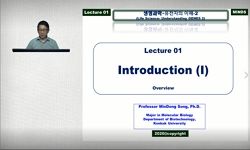This study provides fundamental physicochemical data for developing a competitive distilled liquor with a unique flavor from wild pear. To establish the optimal conditions for pear wine and distillate production, the compositions of raw materials were...
http://chineseinput.net/에서 pinyin(병음)방식으로 중국어를 변환할 수 있습니다.
변환된 중국어를 복사하여 사용하시면 됩니다.
- 中文 을 입력하시려면 zhongwen을 입력하시고 space를누르시면됩니다.
- 北京 을 입력하시려면 beijing을 입력하시고 space를 누르시면 됩니다.
https://www.riss.kr/link?id=A109679248
- 저자
- 발행기관
- 학술지명
- 권호사항
-
발행연도
2025
-
작성언어
Korean
- 주제어
-
KDC
505
-
등재정보
KCI등재
-
자료형태
학술저널
-
수록면
634-644(11쪽)
- 제공처
-
0
상세조회 -
0
다운로드
부가정보
다국어 초록 (Multilingual Abstract)
This study provides fundamental physicochemical data for developing a competitive distilled liquor with a unique flavor from wild pear. To establish the optimal conditions for pear wine and distillate production, the compositions of raw materials were analyzed, the fermentation characteristics of different yeast strains were compared, and the quality characteristics of the distillates produced using various distillation methods were assessed. Wild pear juice had a suitable sugar content, pH, acidity, and organic acid composition for fermentation. Comparative analysis of ethanol content, organic acid content, and sensory evaluation findings of fermented pear wine revealed that of the five yeast strains investigated [Lalvin M(Y1), Lalvin 71B-1122(Y2), Fermivin(Y3), Cultured(Songcheon) yeast(Y4), and Seokim(Y5)], Y5 exhibited the best performance. Distillation methods (pot, column-pot, or vacuum) and materials (glass or copper) influenced the quality of liquor produced from Y5, and liquor produced using a vacuum still had a significantly higher aromatic content. A comprehensive analysis of aroma components and a sensory evaluation of aged pear distillates revealed that Y5 liquor produced using a pot (glass) and a vacuum still produced the best results, while Y1 liquor produced with a pot (copper) and column-pot still was still evaluated as excellent.
동일학술지(권/호) 다른 논문
-
- 한국산학기술학회
- 이승민(Seungmin Lee)
- 2025
- KCI등재
-
방사 차폐물로서의 유인우주기지 다층쉘 벽체 개발을 위한 기존 달표면 우주 방사 환경인자에 대한 조사와 기초 시뮬레이션
- 한국산학기술학회
- 장지훈(Jihoon Jang)
- 2025
- KCI등재
-
Controller Area Network에서 침입 탐지 시스템을 위한 센서 데이터를 예측하는 칼만 필터 기반의 공격 탐지 알고리즘 제안
- 한국산학기술학회
- 김정윤(Jeong-yun Kim)
- 2025
- KCI등재
-
사료 내 조단백질 및 Phytase 첨가 수준이 육계 후기의 생산성, 소화율 및 분뇨 내 질소, 인 함량에 미치는 영향
- 한국산학기술학회
- 홍의철(Eui-Chul Hong)
- 2025
- KCI등재





 DBpia
DBpia






